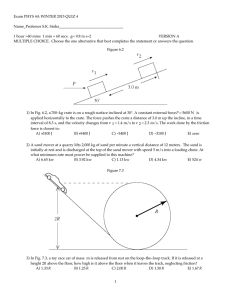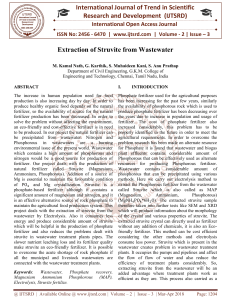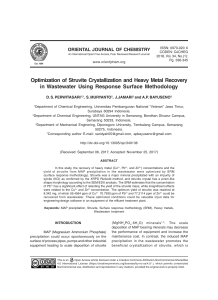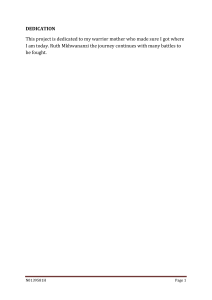Staghorn Calculi: Causes, Treatment & Management
advertisement
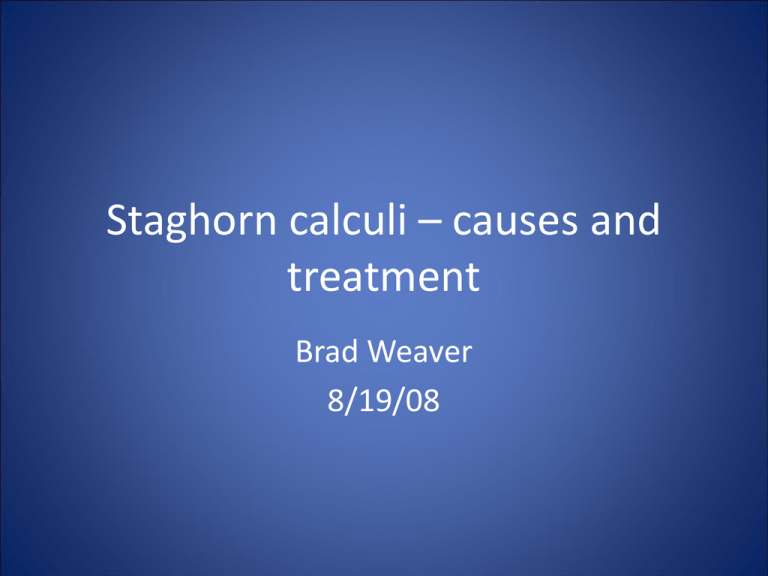
Staghorn calculi – causes and treatment Brad Weaver 8/19/08 Struvite stones • Composed of magnesium ammonium phosphate “triple phosphate” crystals • Precipitate at alkaline pH created by urease producing bacteria such as Proteus or Klebsiella • Urease Urea 2NH3 + CO2 NH3 + H20 NH4+ + OH- Magnesium ammonium phosphate crystals – orthorhombic shape Struvite stones cont. • Occur 3:1 ratio female:male • More common in those anatomically predisposed to infection such as with neurogenic bladder or urinary diversion • Staghorn calculi may also contain mixed calcium/struvite or all calcium stones • The presence of calcium warrants metabolic workup for cause of stones Struvite stone symptoms • • • • Often no symptoms directly related to stone May present with UTI, flank pain, hematuria Passage of struvite stone is rare Can rapidly grow and lead to chronic pyelonephritis and parenchymal scarring • Struvite stones are radiopaque and can be seen on AXR and CT Abdominal plain film showing b/l radiopaque staghorn calculi CT w/o contrast showing R staghorn calculus Cystine stones • Cystine stones may also form staghorn calculi • Cystinuria is a rare autosomal recessive disease responsible to 1-2% of stone formers • Caused by mutations in genes, SLC3A1 and SLC7A9, that are involved in amino acid transport • Median age of onset of kidney stones is 12 • Hexagonal crystals in urine sediment • Treatment with fluids, alkali, cystine binding drugs – penicillamine, tiopronin, and captopril Medical management of staghorn calculi • Dietary phosphorus reduction • Antibiotics rarely successful at eradicating bacteria in struvite stone • Acetohydoxamic acid (AHA, Lithostat) is a urease inhibitor that has been shown to stop stone growth in 80% vs. 40% on placebo. Use is limited by frequent side effects including palpitations, nausea, and hemolytic anemia Surgical management • Open surgery • Percutaneous nephrolithotomy (PNL) • Shock wave lithotripsy (SWL) Retrospective study • 112 patients with staghorn calculus with mean follow up 7.7 years • Renal deterioration occurred in 28% • Worse outcome associated with solitary kidney, recurrent stones, hypertension, urinary diversion, and neurogenic bladder J Urol 1995 May;153(5):1403-7



